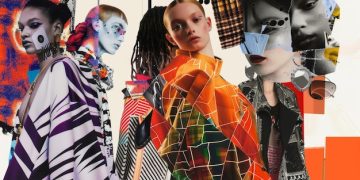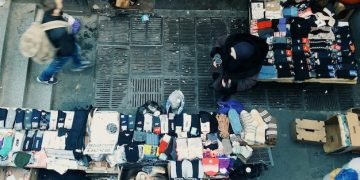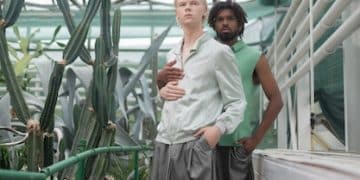Underground Fashion’s Ethical Dilemma: Creativity vs. Sustainability
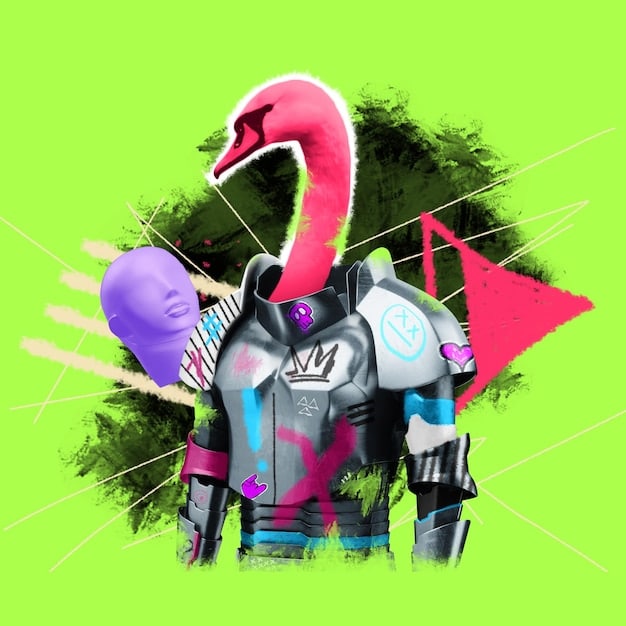
Underground fashion faces the ethical dilemma of balancing creative expression with sustainable practices, challenging designers to innovate responsibly while minimizing environmental impact.
The allure of underground fashion’s ethical dilemma: balancing creativity and sustainability is undeniable, a realm where innovation thrives and self-expression knows no bounds. But beneath the surface of avant-garde designs and rebellious aesthetics lies a growing concern: the environmental and social impact of this vibrant subculture.
The Rise of Ethical Consciousness in Underground Fashion
Underground fashion, traditionally a space for rule-breaking and boundary-pushing, is increasingly grappling with its environmental footprint. The DIY ethos that often defines this scene is now being channeled towards creating sustainable and ethical practices.
Designers and consumers alike are questioning the fast-fashion model and seeking alternatives that align with their values.
Shifting Consumer Values
Consumers are no longer just seeking unique and edgy styles; they are also demanding transparency and accountability from brands. They want to know where their clothes come from, who made them, and what impact their purchases have on the planet. This shift in consumer values is pushing underground fashion to embrace ethical practices.
- More consumers are actively researching brands’ sustainability initiatives.
- There’s a growing demand for clothing made from recycled or upcycled materials.
- Consumers are willing to pay more for ethically produced garments.
Underground fashion is proving to be a launchpad for a more conscious approach to creativity.

The Allure and Impact of Fast Fashion on Underground Scenes
Fast fashion’s siren song of affordability and trendiness has infiltrated even the most rebellious corners of the fashion world. While the underground once stood in stark contrast to mass-produced trends, the accessibility of fast fashion presents a unique challenge.
Its rapid-fire production cycles and disposable nature also threaten the very values of sustainability and unique identity that underground fashion seeks to uphold.
Compromised Creativity?
The allure of fast fashion also risks diluting the creative spirit of underground fashion. As trends become more easily accessible, the drive to innovate and create truly unique pieces diminishes. Designers might find themselves influenced by mainstream trends rather than pushing boundaries.
The underground, once a haven for originality, now faces the risk of homogenization.
- Fast fashion relies on unethical labor practices, contradicting the values of many underground designers.
- The low cost of fast fashion often comes at the expense of environmental sustainability.
- The readily available trends can stifle creativity and originality.
Navigating the influence of fast fashion is crucial for maintaining its authenticity.
Upcycling and Repurposing: The Heart of Sustainable Underground Fashion
One of the most visible trends in sustainable underground fashion is the embrace of upcycling and repurposing. Designers are finding creative ways to transform discarded materials into unique and fashionable pieces, giving new life to old clothes and reducing waste.
This approach not only minimizes environmental impact but also adds a layer of artistic expression to each garment.
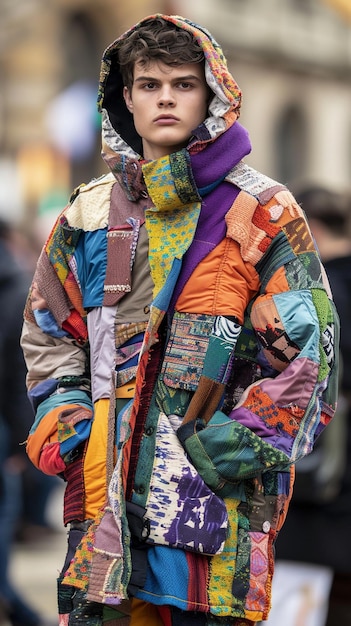
Creative Techniques in Upcycling
Upcycling is not just about reusing old clothes; it’s about reimagining them. Designers employ various techniques to transform discarded materials into desirable pieces. Deconstruction, patchwork, and embellishment are just a few of the methods used to create unique and eye-catching designs.
This process requires imagination and skill, turning unwanted items into objects of desire.
- Designers are sourcing materials from thrift stores, vintage shops, and even waste streams.
- They experiment with different techniques to create unique textures and patterns.
- Upcycled garments tell a story, adding depth and character to the design.
Upcycling and repurposing transform waste into wearable art.
Innovating with Alternative Materials
Beyond upcycling, underground fashion designers are also experimenting with alternative materials to create more sustainable garments. This includes using organic fabrics, recycled fibers, and even innovative materials made from waste products.
These materials offer a more eco-friendly alternative to conventional fabrics, reducing the environmental impact of the fashion industry.
The Rise of Sustainable Textiles
Sustainable textiles are gaining traction. Materials like hemp, bamboo, and organic cotton are becoming more readily available. These fabrics require fewer resources to produce and are less harmful to the environment than conventional cotton or synthetic fibers.
Designers are also exploring innovative materials like Piñatex (made from pineapple leaf fibers) and mushroom leather, pushing the boundaries of sustainable fashion.
- Alternative materials are biodegradable and compostable, reducing waste.
- They often require fewer pesticides and herbicides to produce.
- Innovative materials offer unique textures and properties, inspiring new designs.
Alternative materials are changing the landscape of sustainable fashion.
The Role of Local Production and Artisanal Practices
Another key aspect of ethical underground fashion is a focus on local production and artisanal practices. By producing garments in their communities and working with local artisans, designers can reduce their carbon footprint and support local economies.
This approach also allows for greater transparency and control over the production process, ensuring fair labor practices and ethical sourcing.
Supporting Local Communities
Local production not only reduces transportation emissions but also supports local businesses and creates jobs within the community. By working with local artisans, designers can help preserve traditional crafts and techniques, ensuring that these skills are passed down to future generations.
This creates a more sustainable and resilient fashion ecosystem.
- Local production reduces the need for long-distance shipping, minimizing environmental impact.
- It supports local economies and strengthens communities.
- Artisanal practices add value and authenticity to garments.
Local production and artisanal practices are the cornerstones of ethical fashion.
Challenges and Opportunities in Scaling Sustainable Underground Fashion
While sustainable underground fashion is gaining momentum, scaling these practices presents unique challenges. From sourcing sustainable materials to competing with fast fashion prices, designers face numerous hurdles. However, these challenges also create opportunities for innovation and collaboration.
By working together and finding creative solutions, the underground can pave the way for a more sustainable fashion future.
Overcoming Obstacles
Sourcing sustainable materials can be more expensive and time-consuming than using conventional fabrics. Designers may also lack the resources and infrastructure to scale their production. However, collaborations with other designers, suppliers, and organizations can help overcome these challenges.
By sharing resources and knowledge, the underground can build a stronger and more resilient ecosystem.
- Finding funding for sustainable initiatives can be difficult.
- Educating consumers about the value of ethical fashion is crucial.
- Collaborations can help share resources and expertise.
Scaling sustainable fashion requires creativity, collaboration, and commitment.
| Key Element | Brief Description |
|---|---|
| ♻️ Upcycling | Reusing discarded materials to create new fashion items. |
| 🌱 Sustainable Materials | Using materials like organic cotton, hemp, and recycled fibers. |
| 🌎 Local Production | Producing garments locally to reduce carbon footprint. |
| 🤝 Ethical Labor | Ensuring fair wages and safe working conditions for all workers. |
FAQ
▼
Ethical underground fashion combines creative expression with responsible practices, prioritizing sustainability, fair labor, and transparency to minimize its environmental and social impact.
▼
Sustainability is vital as it addresses the environmental impact of the fashion industry, reducing waste, pollution, and resource depletion. It aligns with the values of originality and responsibility.
▼
Support ethical brands by researching their practices, purchasing upcycled or sustainable products, and advocating for transparency and fair labor conditions within the industry.
▼
Alternative materials include organic cotton, hemp, bamboo, recycled fibers, Piñatex (pineapple leaf fiber), and mushroom leather, offering eco-friendly options with reduced environmental impact.
▼
Ethical designers often face challenges like higher material costs, limited resources, competition with fast fashion, and the need for greater consumer awareness and support for their practices.
Conclusion
The journey to balance creativity and sustainability in underground fashion is ongoing, filled with both challenges and opportunities. By embracing ethical practices, innovative materials, and local production, the underground can continue to be a vibrant space for self-expression while minimizing its impact on the planet.
